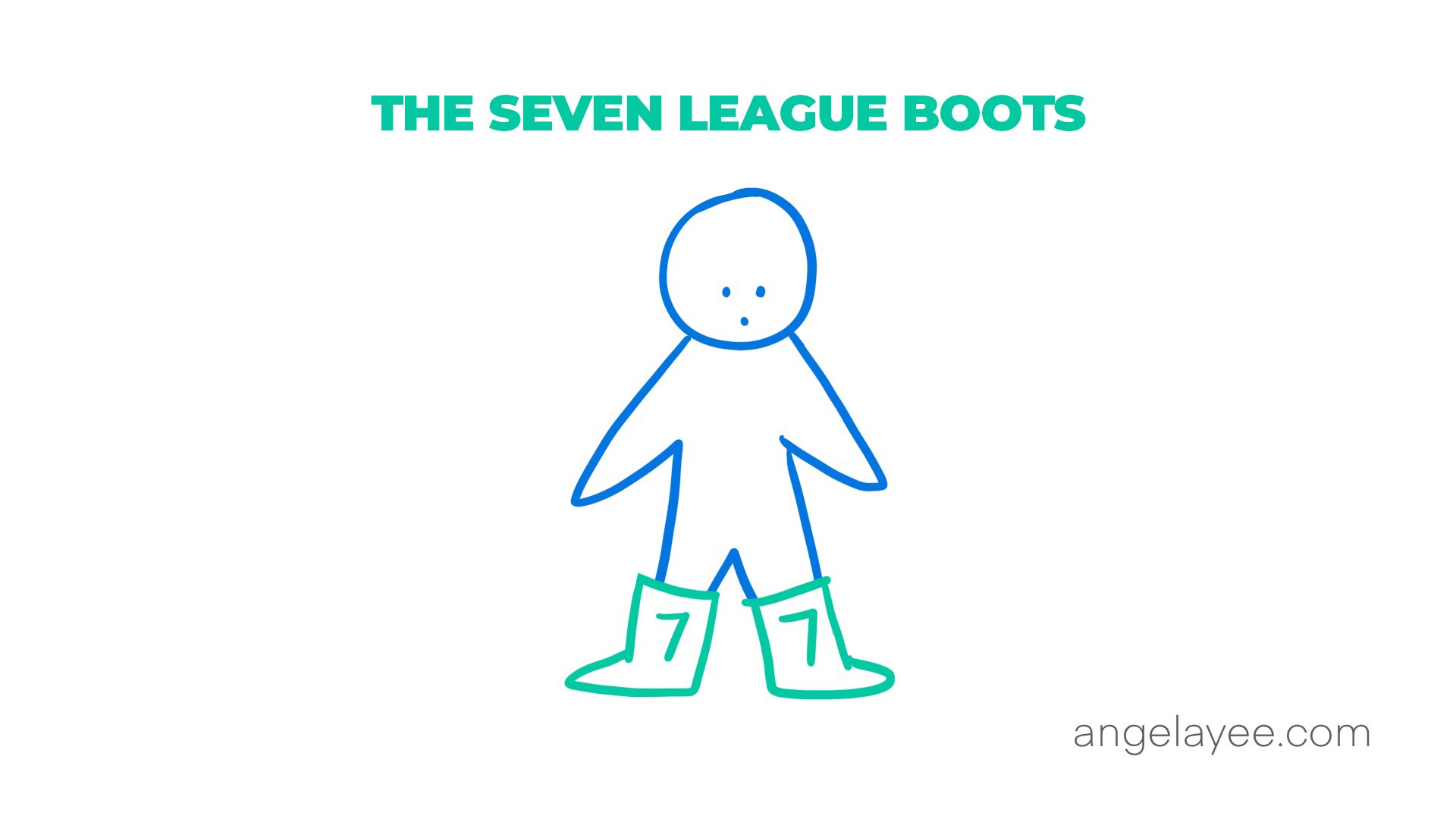Seven-League Boots and Stepping Stones: Decision-Making for Indecisive People
I am indecisive.
I have a long history of hanging decisions.
My Amazon cart has items sitting in there for half a year or more before pulling the trigger. (The “Saved for Later” list is too long to count!)
When we go out to eat, I am forced to make a decision out of hunger because it is too hard to choose where to go, so it takes forever.
My husband has made every single major purchase for our family — even essentials (in my line of work) like computers and cell phones. If it were up to me, we’d still be waiting.
Thank goodness for my decisive husband!
It does not help that my Strengthsfinder profile is a deadly combination for decision-making:
Achiever, with a strong compulsion to get things done (which requires decisions), plus
Arranger, with the flexibility to move things around and strong leanings to optimize things to perfection (which requires decisions), plus
Strategic, seeing patterns and issues and figuring out ways to proceed (which requires decisions).
You would think with strengths like that I am a decision-making machine.
Nope. I am constantly filled with angst. So many choices! So many alternatives! So many ways to proceed! And I must find the best way to optimize. Plus, the strong need to move forward and check it off my list just adds to the anxiety.
So it is that I have great empathy for people who have a hard time making decisions, especially as they relate to personal opportunities, such as job prospects or leadership roles. As I have pondered on how to help them (and myself!), I realized that part of the difficulty is that when it comes to decision-making, at times we wear Seven League Boots.
Seven League Boots are found in European folklore. The idea is that you strap on the boots, and one step will take you seven leagues, or about twenty-one miles. It is the fairy-tale equivalent of a space wormhole to shunt you across vast geographic areas of land, an easy way to get your character to pass all the boring narratives of slow travel in days before modern transportation.
Sometimes indecisive folks lock up because there is an opportunity before them, and in order to decide, they are wearing Seven League Boots.
They jump way ahead to the future, playing out the scenarios to see what it looks like, especially if things go wrong.
Someone asks you to take on a major project.
The project looks daunting.
You wonder where you will get all the resources.
You think of all the potential pitfalls that could cause the project to fail.
You know there will be people who won’t like you and may even sabotage you.
You guess many things you can’t even predict will cause issues.
You wonder if you’re up to the task.
And in the end, it is just too much work or too daunting. Forget it. How about you do something more fun and less stressful. Like surfing. Whether the waves or the web.
Play out this scenario, and it just ends in stress and indecision. May I suggest a more productive decision pathway? Instead of Seven League Boots, utilize the Stepping Stone Strategy.
The Stepping Stone Strategy for decision-making is about taking a step and seeing what happens.
Instead of launching your imagination far down the road and trying to anticipate all of the challenges that you need to overcome, just take the next step and see what unfolds as a result.
As a result of that step, it could be that another stepping stone appears or another door opens. Or perhaps a door begins to close, and you realize it’s not the right way to go.
A friend told me that someone they know uses a similar strategy. They take a step and see if the gap to the next step becomes smaller or bigger. A smaller gap could be to continue. A wider gap could be a sign it’s time to slow down or eventually stop.
It takes discernment, as sometimes there are more considerable challenges that you actually should overcome. But if doors of opportunity start to close, sometimes that’s a sign that you should head another way.
Hello, World!
Questions for Reflection
While you are on the stepping stone, considering whether to go to the next one or not (or sometimes multiple stones, because you have more than one choice), ponder some questions that I have found helpful:
Am I saying “no” to myself before I take a step, even though no one else is? (Defeat self-limiting beliefs)
Is this choice leading to or skirting the edge of sin? (Avoid bad choices and wrongdoing.)
Does this choice fit my moral compass and give my conscience peace? (Stay on the high road)
Does this opportunity fit with the gifts and strengths I’ve been given? (Steward the gifts God has given you)
Does this choice line up with what I know so far of my calling and future direction? (Align with the purposes God has stirred in you)
Is this a difficult or courageous thing to do that will stretch me? (Create opportunities for growth)
There are no easy answers to high-stakes decisions, but using the Stepping Stone Strategy, praying and listening, processing with wise folks, and doing much reflection and pondering will bring clarity along the way.
The other element is patience. As time continues, the choices often become clearer as circumstances continue to develop.
In essence, this is the life of faith, trusting God to to show you the next step at the appropriate time. And in the meantime, hang up your boots and just take one step at a time.
__________________________________
Want more practical tools for personal and leadership development? Subscribe for more articles!








